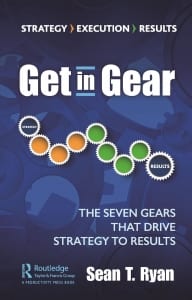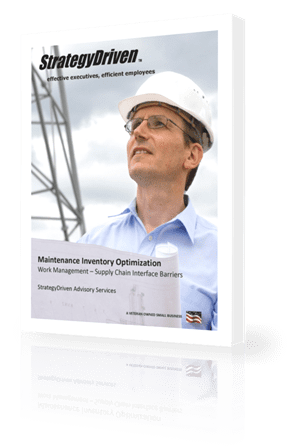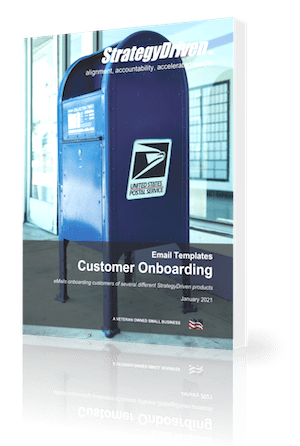Weather the Storm of Constant Change by Strengthening 3 Balance Sheets

Everyone wonders when we will get to the “new normal.” It may be preferable to call it the “next normal.” Whatever becomes normal as we progress through COVID-19 is just temporary — like after 9/11 or the financial crash of 2008, there will be another major disruption following in the not-too-distant future. We need to evolve amidst an on-going sequence of next normals without capsizing.
How do you survive, or even thrive, in a world of continuous turbulence and change? The organizations that have best weathered the COVID-19 storm entered it with strong balance sheets in three functions: Not only do they have a strong financial balance sheet, they also have strong balance sheets with their team members and strong balance sheets with their customers.
Regardless of what the future looks like, to be prepared and to weather the storm of perpetual change, you must prudently steward all three balance sheets. Navigating through the next normal requires that you:
1. Have a plan. The plan must include both your purpose and your strategy.
Purpose creates the True North for the organization — what you aspire to contribute. People want to contribute to something bigger than themselves. Your purpose defines what that something is. Purpose attracts talent and aligns and energizes effort. What is the organization’s higher calling? Why does your organization exist? Why does your organization matter?
Strategy defines how your organization positions itself in the marketplace to create unique value for your target customers. What do you provide or do differently that causes customers to buy from you versus anyone else?
2. Execute your plan. You can’t just have a plan; you have to execute your plan — and most organizations don’t do that well. Some 75 to 80 percent of organizations fail to achieve the results they expect from their strategies.
In a rapidly changing world, execution is critical to survival. It’s vital to maximizing your results and building your triple balance sheet. The ability to execute your organizational strategy smoothly and successfully is what provides the financial, human and reputational capital you need to navigate the next change and to be able to invest in adapting quickly to the next, next normal.
To execute effectively, you must align the actions of everyone in the organization to the purpose and strategy. This means:
- Having the right people in the right roles with the right capabilities. Think through the performance in each current role, the potential for future roles and the capabilities that need to be developed for both current and future roles. Then, connect that assessment to development efforts that help people build the capabilities you’ll need for success in the future.
- Aligning your systems, structures, processes and culture to the purpose and strategy. For example, how well do the compensation, rewards and recognition and promotions systems in your organization align with your strategy?
- Keeping a scorecard that drives performance. Ensure scorecards with quantitative measures of performance, results and trends over time are visible and available to everyone in the organization. This allows them to make adjustments mid-course that can affect the outcome.
- Following-up and following-through. To both generate learning and create rigorous accountability for performance and for living the values of the organization, schedule regular updates to analyze performance gaps and adjust the plan for moving forward.
3. Just lead, dammit! Leaders deliver results by fully engaging their teams in the effort. They build organizations of people passionate about and wanting to contribute their best to the company every day. In order to build a strong balance sheet with their teams, great leaders forge deep connections to their team members. They:
- Communicate often and openly. With rapid changes in the environment, leaders need to communicate often and openly. Failure to do so creates a vacuum that people will fill, often by making stuff up. Leaders should convey a realistic picture of the dynamic environment of the market where conditions are likely to change rapidly.
- Create dialogue, not diatribe: One-way, top down communication stifles the kind of multidirectional communications required to fully understand and adapt to rapidly changing circumstances. As a leader, you can’t possible have all the answers — too many unknowns and even the “knowns” can change. It’s critical to be clear about what you do and what you don’t know.
- Empathize with their team’s point-of-view. Constant change can put people on edge. Show sensitivity to the emotional and real challenges individuals on the team face. Hear the question behind the question, or the key point behind what team members say.
- Are authentic. People want their leaders to be real. They appreciate honesty, even if it’s painful or upsetting. Being authentic builds trust, which is vital for ensuring that your organization is strong and resilient. Most importantly, it sets the right example for others to emulate.
4. Build resilience. Mike Tyson famously said, “Everyone has a plan until they get punched in the mouth.”
Regardless of how good your plan is, or how effectively you execute, you’re going to get punched in the mouth! In a world of perpetual whitewater, you have to be prepared for the next punch, the next wave, the next rapid or the next life-threatening obstacle.
Thriving through an endless stream of “next normals” requires that organizations are tough enough to adapt regardless of how difficult the circumstances. Resilient organizations:
- Have strong, consistent core values. Values like integrity, respect and trust provide stability amidst the upheaval and shape a culture that enables everyone to take action in an environment of uncertainty.
- Generate trust. Leaders must believe and trust that everyone will act in the best interest of the organization, and team members must trust and believe in their leaders and the organization as a whole. This is critical to enabling the kind of dialogue necessary to lead through uncertain times. With trust, people closest to the challenges are given the responsibility and latitude to act without waiting for direction from above, where leaders often have less information about the conditions on the ground.
- Constantly learn. Rapid change requires constant experimentation in how to adapt to that change. Instilling responsibility throughout the organization often results in mistakes and errors as people learn what works and what doesn’t. Resilient organizations have a “fail fast, learn fast” mentality that allows them to adapt to change faster than others.
- Foster accountability. People perform their best in an environment in which results matter. Accountability reinforces whichever results matter. And, there must be accountability for playing within the core values of the organization, or people quickly learn that they don’t matter, which, in turn, erodes the fundamental trust necessary to create success.
Being prepared for the “next normal” requires building your balance sheet financially and with your team and your customers. To do so, you have to have a great plan for success, execute that plan effectively and constantly work to build a resilient organization. None of this is easy in a highly competitive, rapidly changing environment. But the reward for getting it close to right is earning the opportunity to adapt again when the next wave hits.
About the Author













Leave a Reply
Want to join the discussion?Feel free to contribute!